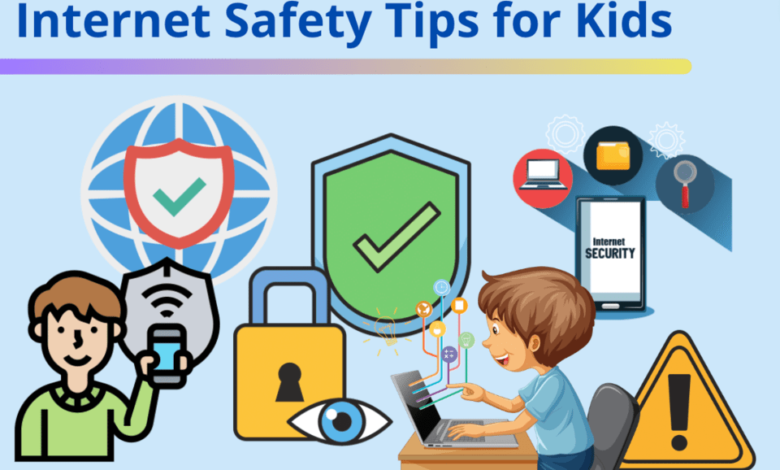Cybersafety for Kids: How To Teach Your Children Safe Internet Use

In today’s digital age, ensuring your children’s safety online has become more critical than ever. From cyberbullying to online predators, the virtual world presents various risks that can impact our children’s well-being. As parents, guardians, or caregivers, it is your responsibility to educate your children about cybersafety.
This article aims to guide you in teaching your children safe internet practices while maintaining an engaging and entertaining tone. It explores the importance of addressing online threats, starting conversations about cybersafety, implementing key practices, and receiving online blackmail help when needed.
Understanding the Risks
The online realm can be a double-edged sword for children. While it offers valuable educational resources and avenues for connection, it also exposes them to a host of risks. Cyberbullying lurks in the shadows of social media platforms, while scams and privacy breaches threaten their online security.
By understanding these risks, parents can better equip themselves to educate their children on safe internet practices. Recognizing the prevalence of these dangers forms the foundation for creating a secure online environment for kids.
Starting the Conversation
Initiating a conversation about cybersafety with your children is a crucial first step toward fostering a safe online experience. Begin by creating an open and welcoming space where your child feels comfortable discussing their online activities. Encourage them to share their experiences, questions, and concerns about the internet.
By actively listening and engaging in these discussions, you can build trust and establish an ongoing dialogue on cybersafety. Remember, it’s essential to communicate openly without judgment, allowing your child to feel supported in their online endeavors.
Key Cybersafety Practices
Ensuring your child’s safety in the digital age requires implementing key cybersafety practices. By instilling these habits early on, you can empower your child to navigate the internet safely and protect themselves from potential online threats.
1. Use Strong Passwords and Account Security
Teach your children the importance of using strong, unique passwords for each online account. Enable two-factor authentication (2FA) for an extra layer of security.
2. Recognizing Phishing and Scams
Educate your kids on identifying suspicious emails or messages and ensure they can recognize links that may lead to scams or phishing attempts.
3. Social Media Savvy
Guide your children on managing their privacy settings on social media platforms. They should know to avoid oversharing personal information and be cautious about friend requests from strangers.
4. Practice Cyberbullying Awareness
Cyberbullying is a prevalent issue that can have significant emotional and mental health impacts on children. Educate your kids about the signs of cyberbullying, encourage open communication about their online interactions, and establish strategies for responding effectively to such situations.
5. Monitor and Implement Parental Controls
Implementing monitoring tools and parental controls can help you keep track of your child’s online activities and ensure their safety. From setting screen time limits to filtering inappropriate content, these tools offer a way to balance supervision and trust in the digital world.
You can mitigate potential risks by proactively monitoring and managing your child’s online presence. They allow you to intervene when necessary to maintain a secure online environment.
6. Educate on Online Stranger Danger
Educating children about the risks associated with interacting with strangers online is paramount in ensuring their safety. Encourage your kids to exercise caution when communicating with individuals they don’t know in real life.
Role-playing scenarios can help them understand how to navigate interactions with strangers respectfully. Remember to emphasize the importance of never sharing personal information, photos, or location details with strangers online.
7. Manage Digital Footprints
All children should learn to manage their digital footprint. After all, everything from the content they post on social media to their online interactions contributes to their digital presence. Encourage your kids to think before they post, considering how their online activities can impact their future.
8. Respond to Online Blackmail
If your child falls victim to online blackmail, it’s crucial to respond promptly and effectively. Remain calm and reassure your child that they’re not alone. Contact relevant authorities or seek assistance from organizations specializing in online blackmail help.
Encourage your child to preserve evidence, avoid further communication with the perpetrator, and prioritize their safety and well-being. By taking proactive steps and seeking appropriate support, you can navigate the challenges of online blackmail with resilience.
Empowering Children for a Safer Digital Future
Teaching your children about cybersafety and safe internet practices is an ongoing journey that requires active engagement and consistent communication. By understanding the risks, initiating conversations, and implementing key practices, you equip your children with the tools they need to navigate the digital world safely.
Remember to monitor their online activities, educate them about online threats, and encourage responsible technology use. By fostering a supportive and informed environment, you empower your children to embrace the benefits of technology while safeguarding their online experiences for a brighter digital future.



